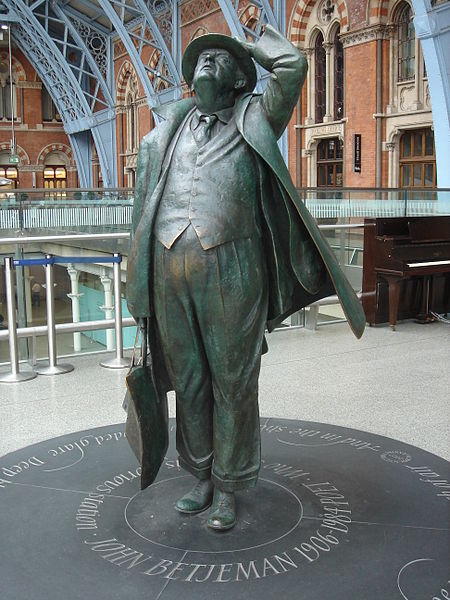Statue of John Betjeman
2007 sculpturesBronze sculptures in the United KingdomBuildings and structures completed in 2007Monuments and memorials in LondonOutdoor sculptures in London ... and 2 more
Sculptures of men in the United KingdomStatues of writers

The statue of John Betjeman at St Pancras railway station, London is a depiction in bronze by the sculptor Martin Jennings. The statue was designed and cast in 2007 and was unveiled on 12 November 2007 by Betjeman's daughter, Candida Lycett Green and the then Poet Laureate Andrew Motion to commemorate Betjeman and mark the opening of St Pancras International as the London terminus of the Eurostar high-speed rail link between Great Britain and mainland Europe. The location memorialises the connection between St Pancras station and Betjeman, an early and lifelong advocate of Victorian architecture.
Excerpt from the Wikipedia article Statue of John Betjeman (License: CC BY-SA 3.0, Authors, Images).Statue of John Betjeman
Euston Road, London King's Cross (London Borough of Camden)
Geographical coordinates (GPS) Address Nearby Places Show on map
Geographical coordinates (GPS)
| Latitude | Longitude |
|---|---|
| N 51.530278 ° | E -0.125556 ° |
Address
St Pancras International Station (St Pancras Station)
Euston Road
N1C 4QP London, King's Cross (London Borough of Camden)
England, United Kingdom
Open on Google Maps










